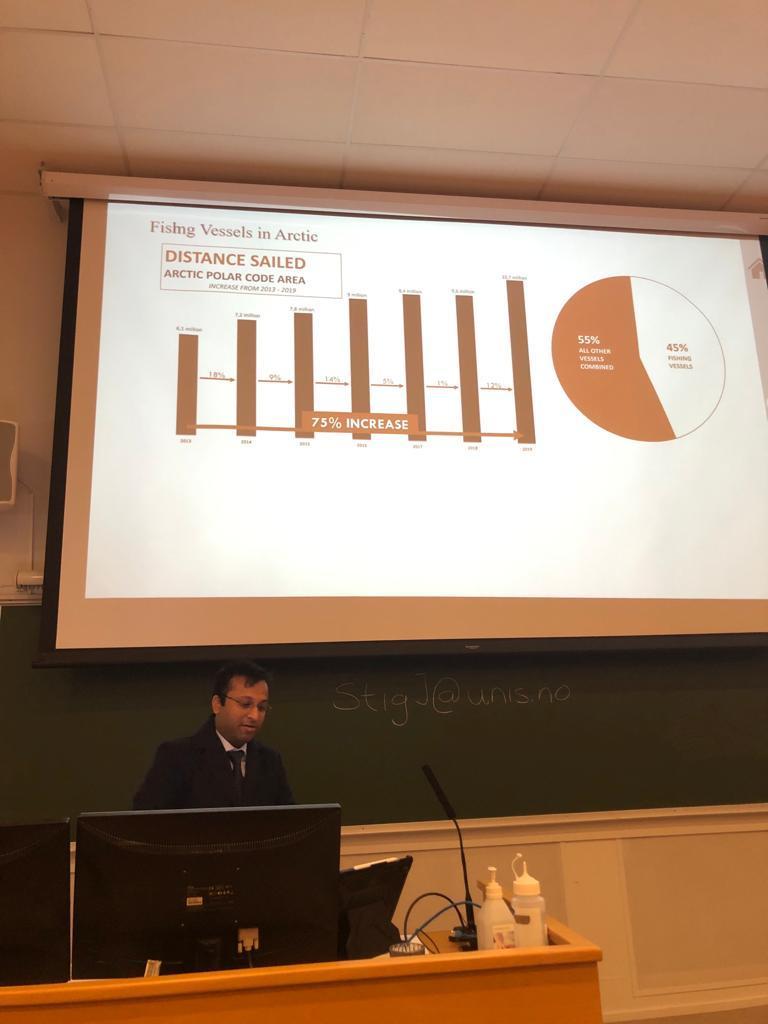The importance of spray flux in sea spray icing estimation
Sushmit Dhar presents his research on the importance of spray flux measurement for spray icing estimation in the Arctic Safety Conference: Arctic safety – best practices and scientific knowledge, 09-11 Nov 2021, Longyearbyen, Svalbard
Sea spray ice accretion is considered one of the significant obstacles to safe ship operation in the Arctic. An accurate model to estimate ice accumulation can make marine operations in the region safer and assist in designing efficient winterization techniques. The accuracy of the estimated ice accretion by the present ship-icing models is primarily dependent on the incoming spray flux generated by wave-ship interaction. The icing models are dependent on spray-flux formulas based on a few empirical observations from mostly fishing trawlers, and it is a source of uncertainty for estimating the icing rate. The incoming spray flux consists of the amount of liquid water (LWC), the duration and the velocity of the spray droplets associated with distribution on surface impingement, the spray generation frequency, and the droplet collision efficiency.
This study aims to analyze the dependency of spray icing estimation models on liquid water content (LWC) and spray generation frequency, which are some key parameters of spray flux. To achieve this, we consider a fishing vessel named ONEGA, which capsized and sank after experiencing heavy icing in the Barents Sea west of Yuzhny Island, Novaya Zemlya Archipelago, on 28 December 2020, claiming 17 lives.

By modelling the vessel ONEGA and assuming minimum vessel stability criteria prior to ice accretion, we identify the probable locations of accreted ice and estimate the likely amount of ice accumulation that destabilized the vessel. Then this is compared against the amount of ice accretion estimated by the MINCOG model. In order to highlight the dependency of MINCOG output on the LWC and spray generation frequency, an analysis is carried out using different formulas proposed by researchers. In conclusion, a more realistic spray-flux formulation and considerations such as wind-generated spray flux may improve the icing estimations, ultimately emphasizing the need for more real-time spray-flux measurements.
Sushmit Dhar is a PhD fellow in the Department of Technology and Safety at the UiT - The Arctic University of Tromsø. His work focuses specifically on the icing on ships, with a focus on meteorological measurements in the Arctic. Sushmit completed his master's degree at the UiT in the "Technology and safety in the High North" program, and his thesis focused on sea spray measurement techniques for improving marine icing models. He completed his Bachelor's study at the University of Tasmania and Birla Institute of technology and science with a Nautical specialization. Also, he has experience in working on ships as an officer across the world.